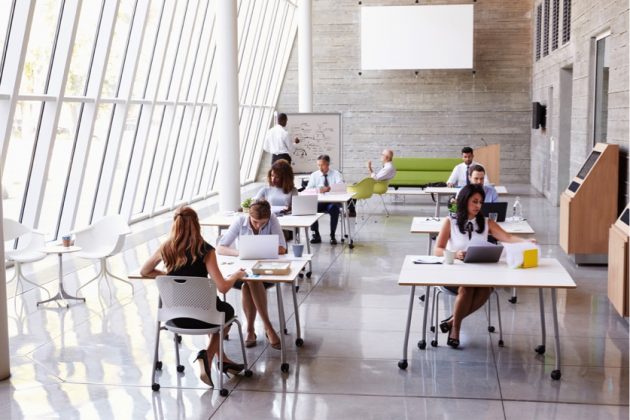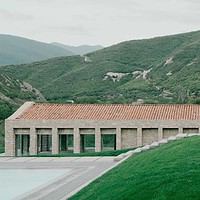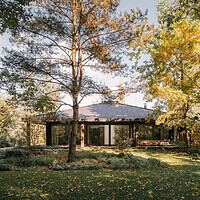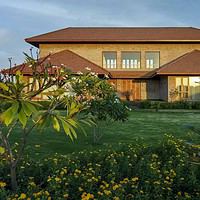It has been thought in the past by business owners and employees alike that a business is a place to work and nothing more. This bleak outlook on the day to day has lead to stylistic and design choices that have favoured efficiency over comfort, with sterile greys and beige inordinately flourishing in the workplace rainbow. However, as a wide range of fields slowly push toward more individual-oriented practices, and workplace research overwhelmingly suggesting the benefits to productivity that a happy work life entails, these unhealthy conditions are slowly dwindling with the times.
The Lighter Side
Outside the office, the advantages and health benefits of natural light have been heralded for improving mood, providing vitamins and boosting energy levels, so why should that be disregarded when one walks into the workplace? Commercial architecture companies are brimming with options that facilitate the free flow of sunshine, and it’s astounding how the simple addition of skylights or windows can affect a workplace’s output.
This originates a range of positive lifestyle alterations, the most prominent of which being improvements to sleep. Studies have suggested that workers in areas with windows sleep an average of 46 extra minutes per night, leading to higher levels of happiness and vitality that aren’t seen in those that work in enclosed spaces.
However, when deciding to implement additional windows or skylights in your office or place of business, considering the layout you are working with is integral to avoiding some of the annoyances that can come with unmanaged lighting. Glare and overheating can serve to counteract your intended boost in efficiency, so ensuring that your light sources are placed strategically will allow you to bask in the benefits, without the possible worries and workarounds.
Colour Conditioning
In some ways, our brain’s cognitive functions are relatively simplistic and easy to manipulate. While this can occasionally work to our detriment, it means that we have more control over how we see the world than we often give ourselves credit for.
To cut a long story short, there is a lot to be said for the effect that colour can have when humans are involved. More than most, the design choices associated with colour and shade have a profound effect on our moods and how we interact with our surroundings.
Coupled with an abundance of natural light, a selection of bright, pleasant blues, reds, yellows and greens have been shown to boost productivity, happiness, and health. This is a widely held consensus within the world of colour psychology (as the existence of a field labelled “colour psychology” would suggest) which translates perfectly into the often stressful situations of day-to-day employment.
While a dash of paint will have an effect, designing your office around these helpful hues will create an air of positivity that is likely to affect employees and clients alike.
The Freedom to Flourish
The image of a 4×4 cubicle wearing on the sanity of its occupant is one that has terrified those newly entering the workforce for decades. These areas are not only constricting in size, they are stifling for creativity and productivity, prioritising a cost-effective floorplan over employees working to their full potential.
As of the last decade or so, these office styles have begun to dwindle as startups and entrepreneurs observe the efficient benefits of worker fulfillment, leading to much discussion about what can be done to improve the work experience further. Facilitating the ability for employees to move and walk around without disrupting the flow of work is important for both physical and mental health, offering a wide array of positives for those willing to prioritise comfort in their architectural decisions.
Open-plan offices have offered a solution to this issue, with enclosed spaces being replaced with wide spaces to explore when necessary. While there can be concerns with the lack of assured privacy, the freedom to move is sure to make up for it.
Tallying the positives and negatives of different architectural design aspects can be daunting, and it can prove to be a challenge implementing all of these choices in a finite space. However, these steps are not all-or-nothing, and small steps in the right direction are sure to improve your workplace’s happiness.
















